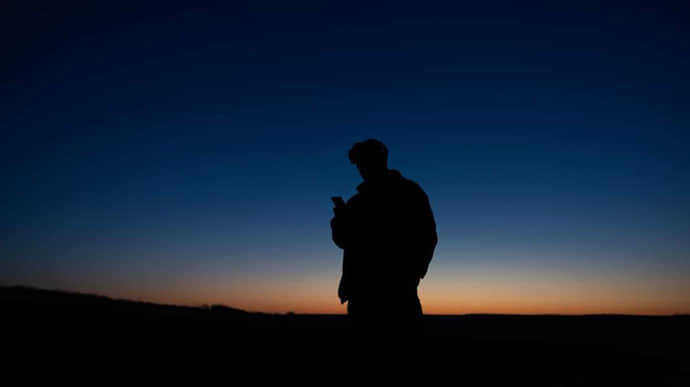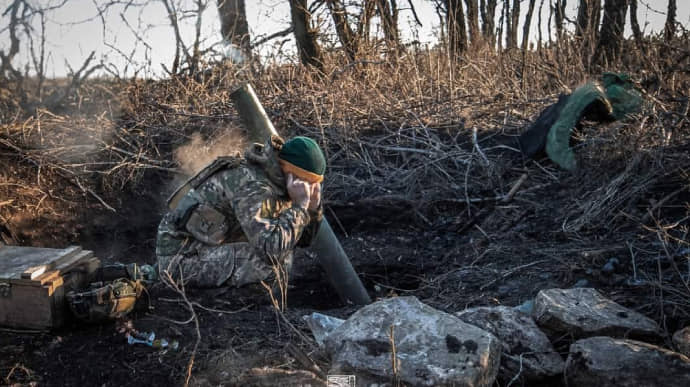Renewables Projects Are Failing. Can New York Buck the Trend?
“Public!” yelled Tefa Galvis, a tall, smiling organizer with New York City Democratic Socialists of America-Ecosocialists. “Power!” answered an energetic crowd of about 65 gathered in Battery Park at lunchtime on Wednesday, a frigid but radiantly sunny day. Overlooking the Statue of Liberty, with the city’s Financial District looming in the background, activists and socialist elected officials celebrated a landmark climate victory—the Build Public Renewables Act, or BPRA—and announced a campaign to make sure the state delivers on the new law’s promise.Recent news on renewable energy has been worrisome. In early November, Orsted, a Danish company, canceled two major wind projects it was supposed to build off the coast of New Jersey, citing supply chain problems, rising interest rates, and other complications. One of Orsted’s planned New Jersey wind farms would have powered half a million homes. This bad news was preceded by reports that New England companies had canceled projects in Connecticut and Massachusetts that would have provided some 3.2 gigawatts of wind power. All these developments amounted to a huge setback for Biden’s wind power goals and, more saliently, the world’s urgent need to address the climate crisis. Things could go differently in New York.Thanks to the BPRA, which passed in May, the state is obligated to evaluate whether it is on track to meet its climate goals. If the private sector is not producing enough renewable energy, the New York Power Authority, a public agency created by Governor Franklin D. Roosevelt in 1931, must make up the difference by building its own renewable energy installations.BPRA passed after a robust organizing campaign led by NYC-DSA (an organization to which I belong). New York’s climate goals were set in 2019 when the legislature passed the Climate Leadership and Community Protection Act, or CLCPA, which requires the state to reduce its overall emissions by 40 percent by 2030. A recent report commissioned by the Public Power NY Coalition found that without unleashing the public power buildout enabled by BPRA, the state will not meet these goals. But thanks to BPRA, filling this gap is now required by law.After Wednesday’s campaign launch in Battery Park, I asked Mike Paulson, associate director of the Brooklyn-based Sane Energy Project, which aims “to replace fracked gas infrastructure with 100% democratically controlled, renewable energy,” how New York could avoid the problems currently bedeviling renewables in neighboring states. “It’s disappointing and concerning that these projects are in jeopardy,” he said of the private wind farms in New England and New Jersey, noting that they would have brought jobs and climate relief to those regions. But their failure, he emphasized, “points to the important role for public power.”Private developers, Paulson and other public power advocates point out, must make a profit for their shareholders, which means every market problem—inflation, supply chain issues, interest rates—is a setback. “They’re not obligated to think about our climate targets,” said Paulson, “or about how many kids went to the emergency room with asthma. With public power, we can take a more responsible approach.”But turning BPRA into reality will still take work. The biggest obstacle to passing BPRA, and the reason it took four years, is the fossil fuel industry. The Public Power NY Coalition expects those interests to try to slow or derail the adoption of public power. They’re optimistic—organizers point out that the passage of BPRA demonstrated that popular support can sometimes defeat the relentless pressure of corporate campaign contributions. “We are up against some of the most monied lobbyists,” Kristen Gonzalez, a state senator who successfully campaigned on BPRA last year and attended the launch of the new campaign on Wednesday, told me. But, she emphasized, the coalition has demonstrated its ability to organize and defeat them.Inertia and complacency will also be formidable foes for public power. Legislative victories can lead the public to believe the work is over, when in fact, it’s just begun. “We fought, we organized, and we won,” said Tefa Galvis of the BPRA victory. Now she says, we have to “make sure it gets enacted.” Paulson agrees, emphasizing that good news can create its own narrative complexities. “The challenge,” he said, “is pushing back on New York’s rose-tinted climate picture.” There are already signs that NYPA is building out its capacities in response to the law, working on its mandated study and hiring new people. Many politicians and community leaders are clamoring to bring these renewable projects to their districts, so their constituents can benefit from the good jobs.In the continued push to make public power a reality, advocates have politics on their side. While private utilities must do unpopular things—wreck the planet, raise rates, avoid unions—the public sector’s incentives all lean in the other direction. And

“Public!” yelled Tefa Galvis, a tall, smiling organizer with New York City Democratic Socialists of America-Ecosocialists. “Power!” answered an energetic crowd of about 65 gathered in Battery Park at lunchtime on Wednesday, a frigid but radiantly sunny day. Overlooking the Statue of Liberty, with the city’s Financial District looming in the background, activists and socialist elected officials celebrated a landmark climate victory—the Build Public Renewables Act, or BPRA—and announced a campaign to make sure the state delivers on the new law’s promise.
Recent news on renewable energy has been worrisome. In early November, Orsted, a Danish company, canceled two major wind projects it was supposed to build off the coast of New Jersey, citing supply chain problems, rising interest rates, and other complications. One of Orsted’s planned New Jersey wind farms would have powered half a million homes. This bad news was preceded by reports that New England companies had canceled projects in Connecticut and Massachusetts that would have provided some 3.2 gigawatts of wind power. All these developments amounted to a huge setback for Biden’s wind power goals and, more saliently, the world’s urgent need to address the climate crisis.
Things could go differently in New York.
Thanks to the BPRA, which passed in May, the state is obligated to evaluate whether it is on track to meet its climate goals. If the private sector is not producing enough renewable energy, the New York Power Authority, a public agency created by Governor Franklin D. Roosevelt in 1931, must make up the difference by building its own renewable energy installations.
BPRA passed after a robust organizing campaign led by NYC-DSA (an organization to which I belong). New York’s climate goals were set in 2019 when the legislature passed the Climate Leadership and Community Protection Act, or CLCPA, which requires the state to reduce its overall emissions by 40 percent by 2030. A recent report commissioned by the Public Power NY Coalition found that without unleashing the public power buildout enabled by BPRA, the state will not meet these goals. But thanks to BPRA, filling this gap is now required by law.
After Wednesday’s campaign launch in Battery Park, I asked Mike Paulson, associate director of the Brooklyn-based Sane Energy Project, which aims “to replace fracked gas infrastructure with 100% democratically controlled, renewable energy,” how New York could avoid the problems currently bedeviling renewables in neighboring states. “It’s disappointing and concerning that these projects are in jeopardy,” he said of the private wind farms in New England and New Jersey, noting that they would have brought jobs and climate relief to those regions. But their failure, he emphasized, “points to the important role for public power.”
Private developers, Paulson and other public power advocates point out, must make a profit for their shareholders, which means every market problem—inflation, supply chain issues, interest rates—is a setback. “They’re not obligated to think about our climate targets,” said Paulson, “or about how many kids went to the emergency room with asthma. With public power, we can take a more responsible approach.”
But turning BPRA into reality will still take work. The biggest obstacle to passing BPRA, and the reason it took four years, is the fossil fuel industry. The Public Power NY Coalition expects those interests to try to slow or derail the adoption of public power. They’re optimistic—organizers point out that the passage of BPRA demonstrated that popular support can sometimes defeat the relentless pressure of corporate campaign contributions. “We are up against some of the most monied lobbyists,” Kristen Gonzalez, a state senator who successfully campaigned on BPRA last year and attended the launch of the new campaign on Wednesday, told me. But, she emphasized, the coalition has demonstrated its ability to organize and defeat them.
Inertia and complacency will also be formidable foes for public power. Legislative victories can lead the public to believe the work is over, when in fact, it’s just begun. “We fought, we organized, and we won,” said Tefa Galvis of the BPRA victory. Now she says, we have to “make sure it gets enacted.” Paulson agrees, emphasizing that good news can create its own narrative complexities. “The challenge,” he said, “is pushing back on New York’s rose-tinted climate picture.”
There are already signs that NYPA is building out its capacities in response to the law, working on its mandated study and hiring new people. Many politicians and community leaders are clamoring to bring these renewable projects to their districts, so their constituents can benefit from the good jobs.
In the continued push to make public power a reality, advocates have politics on their side. While private utilities must do unpopular things—wreck the planet, raise rates, avoid unions—the public sector’s incentives all lean in the other direction. And public power is popular, thanks to the coalition’s strong organizing over the last four years. People are angry about inflation and unconscionably high rate hikes, worried about climate crisis as the skies turn red and neighbors drown in their basements. Democratic Governor Kathy Hochul barely won her last election, and polls showed that public power was viewed far more favorably than she was.
Public power doesn’t have to risk angering anyone by raising taxes or detracting from other valued priorities, either: the NYPA is empowered to raise bonds, and public power has been supercharged by the Inflation Reduction Act, or IRA, which provides money for any public entity to build renewable energy. In the past, it was hard for public utilities to take advantage of public funding for renewables, as such funding has generally taken the form of tax credits. But the IRA offers it as direct payment, a boon to any kind of public agency wishing to participate. As Mike Paulson said, “Not taking advantage of that is leaving money on the table that could be used for New Yorkers to get clean air, clean water, good-paying jobs,” and, he added, lower utility bills.
The mood at Battery Park was buoyant, unusual for any gathering of climate activists. New York State is big, and what happens here matters for that reason alone. But the crowd also understood that making public power work here could have national, even global implications. Said Claire Valdez, a union activist recently endorsed by NYC-DSA for an assembly seat in Queens, “We’re setting the standard for a Green New Deal here in New York.” If New York can show that the green transition will not only lower emissions but put money back in working people’s pockets, the results could be seismic for everyone.


